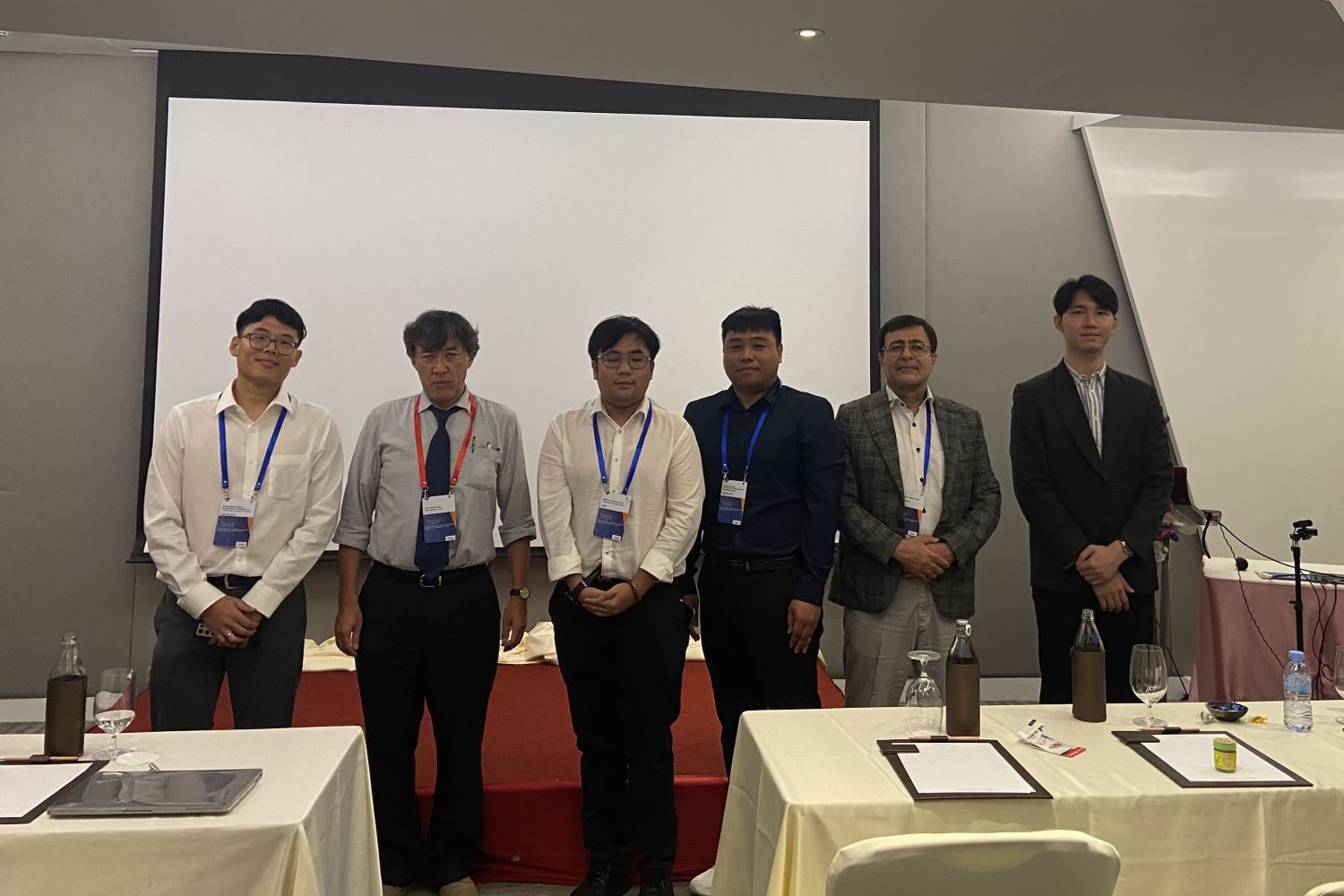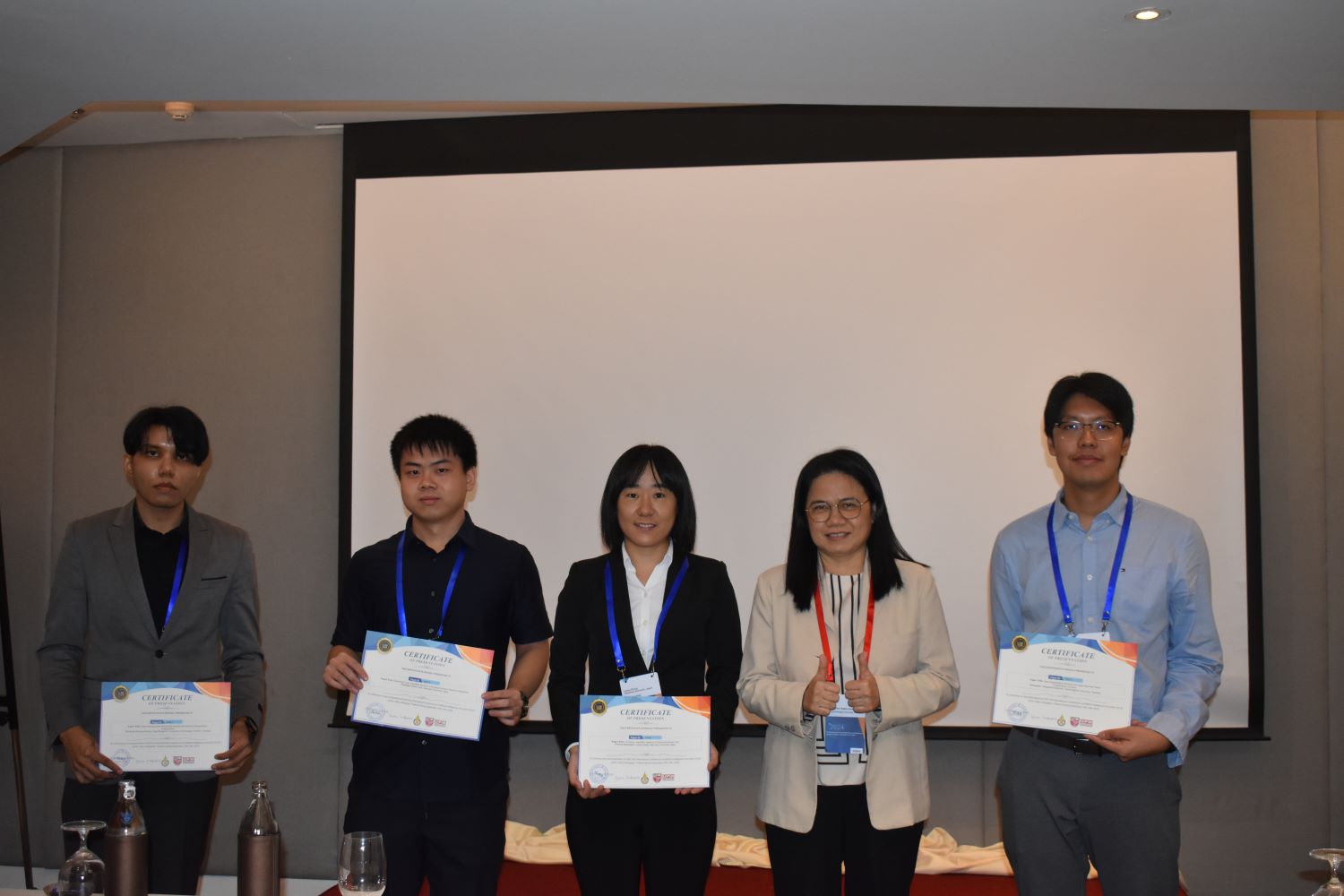ICAII 2024 | September 12-14, 2024 | Bangkok, Thailand
2024 2nd International Conference on Artificial Intelligence Innovation (ICAII 2024)


Conference Photos







KEYNOTE SPEAKERS
Prof. Chiharu Ishii
Hosei University, Japan
Biography: Chiharu Ishii received his PhD in Mechanical Engineering from Sophia University, Japan in 1997. He worked at Ashikaga Institute of Technology between 1997 and 2002, at Kogakuin University between 2002 and 2009, and at Shibaura Institute of Technology between 2009 and 2010. He has been working at Hosei University since 2010, and currently working as a Professor with the Department of Mechanical Engineering, Faculty of Science and Engineering at Hosei University. Dr. Chiharu Ishii has received several awards such as The Best Paper Award in the area of Tactile and Haptic Interfaces at the 4th International Conference on Human System Interaction (IEEE HSI 2011); Best Paper Award at the 1st International Conference on Computer Science, Electronics and Instrumentation (ICCSE 2012); Best Presentation Award at the International Conference on Intelligent Mechatronics and Automation (ICIMA 2013); Excellent Oral Presentation Award at the 4th International Conference on Soft Computing & Machine Intelligence (ISCMI 2017); 3rd Prize, Excellent Paper Award at the 2021 IEEE 3rd Global Conference on Life Sciences and Technologies (LifeTech 2021). He is currently a member of IEEE, SICE, JSME, RSJ, IEEJ and JSCAS. His research interests are in medical robotics and assistive technology.
Speech Title: Development of Robotic Palpation System and Underwater Use Power Assist Suit
Abstract: In this talk, is organized by two parts. First, a robotic palpation system developed in our laboratory is discussed. The robotic palpation system is teleoperated by leader-follower control method. The reaction force of the touched object is measured by 6-axis force/torque sensor and is presented to the operator’s arm through the haptic input device Omega.7. In addition, tactile stimulation is presented to operator’s fingertip by the tactile feedback device. In robotic surgery, when palpation is performed under use of the trocar, it is difficult to realize force or tactile sense of the touched object because the forceps is affected by contact with the trocar. Therefore, cancellation of the influence of the trocar on the forceps was attempted by using the neural network. In order to verify effectiveness of the developed palpation system, location identification experiments were carried out. The results showed the effectiveness of the neural network, and identification error of location of the imitation tumor was less than 0.7mm.
Second, an exoskeleton, in other words, power assist suit for underwater use is discussed. When constructing the foundation of a breakwater, the foundation stones that have been dropped into the sea are leveled manually by divers. This work gives diver’s body a heavy strain. Therefore, a power assist suit for elbow joint that can be used underwater was developed in our laboratory to reduce the burden on the diver’s arm. In order to verify an effectiveness of the developed power assist suit, experiments of lifting and lowering the heavy object were carried out, and surface electromyogram (SEMG) of the biceps brachii muscle was measured to evaluate muscle activity. As a result, the muscle activity in case of wearing the assist suit was smaller than that of not wearing the assist suit. Thus, effectiveness of the developed power assist suit for underwater work was verified.

Prof. Ahmed CHEMORI
LIRMM, University of Montpellier, CNRS, Montpellier, France
Biography: Ahmed Chemori received his M.Sc. and Ph.D. degrees, both in automatic control from Polytechnic Institute of Grenoble, France, in 2001 and 2005 respectively. During the year 2004/2005 he has been a Research and Teaching assistant at Laboratoire de Signaux et Systèmes (LSS - Centrale Supelec) and University Paris 11. Then he joined Gipsa-Lab (Former LAG) as a CNRS postdoctoral researcher.
He is currently a senior CNRS researcher in Automatic control and Robotics for the French National Center for Scientific Research (CNRS), at the Montpellier Laboratory of Computer Science, Robotics and Microelectronics (LIRMM).
His research interests include nonlinear (adaptive and predictive) control and their real-time applications in different fields of robotics (underactuated robotics, parallel robotics, underwater robotics, humanoid robotics and wearable robotics). He is the author of more than 160 scientific publications, including international journals, patents, books, book chapters and international conferences. He co-supervised 19 PhD theses (including 17 defended) and more than 40 MSc theses. He served as a TPC/IPC member or associate editor for different international conferences and he organized different scientific events (e.g. PKM 2016 and PKM 2018 Summer Schools, WIR 2017 and Robo-Rehab 2019 workshops). He has been a visiting researcher/professor at different institutions (NTNU - Norway, Tohoku University - Japan, EPFL - Switzerland, TUT - Estonia, HUST - China, UPC - China, CINVESTAV - Mexico, UPT - Mexico, Chiang Mai University - Thailand, KAUST - Saudi Arabia, ENIT - Tunisia, ENSIT - Tunisia, UMC - Algeria, etc). He has also delivered various plenary/keynote lectures at different international conferences.
Speech Title: On Motion Control of Underactuated Robotic Systems
Abstract: Underactuated robotic systems are those systems with less control inputs than generalized coordinates (degrees of freedom) i.e., they have generalized coordinates that are not actuated, and this is a source of dynamic constraints which are generally non integrable and therefore second order non-holonomic. Many examples of such systems exist, mainly in robotics, they include, among others, underactuated robot manipulators, gymnast robots and particularly the acrobot, the pendubot, the Planar Vertical Takeoff and Landing (PVTOL) aircrafts, some undersea vehicles and other mobile robots. Another basic feature of this class of systems is the nonlinear dynamics that they have; moreover, their actuated coordinates are nonlinearly coupled with the unactuated coordinates. This talk deals with control of underactuated robotic systems, where two main problems will be discussed; the first one concerns stabilization around unstable equilibrium point, whereas the second one deals with stable limit cycle generation. The proposed control methods are illustrated through numerical simulations as well as real-time experiments on different examples of underactuated robotic systems and mainly the inertia wheel inverted pendulum.

Prof. David Banjerdpongchai
Chulalongkorn University, Thailand
Biography: David Banjerdpongchai received B.Eng. degree (First class honors) from Chulalongkorn University, and M.S. and Ph.D. degrees from Stanford University, all in Electrical Engineering, respectively. He has been with the department of Electrical Engineering, Faculty of Engineering, Chulalongkorn University. Currently, he is a professor of Electrical Engineering and the head of the Center of Excellence in Intelligent Control Automation of Process Systems. He is a senior member of IEEE, President of ECTI Association (2024-2025), and a founding chair of IEEE Control Systems Society Thailand Chapter (2015-2021). He served as a general co-chair of ECTI-CON 2013, ICA-SYMP 2019, ECTI-CON 2024, ISCIT 2024, associate editor of IJCAS and a section editor-in-chief of ASEAN Engineering Journal. His research interests are energy management systems, control design of nonlinear systems, and convex optimization in robust control problems.
Speech Title: Convex Optimization Approach to Robust Iterative Learning Control
Abstract: This research proposes a convex optimization design of robust iterative learning control (ILC) algorithm for linear systems subject to parametric uncertainties. The system model is described by the Markov matrix as an affine function of parametric uncertainties. The robust ILC design is formulated as a min-max problem using a quadratic performance criterion subject to constraints of the control input update. We reformulate the design problem as a convex optimization over linear matrix inequalities (LMIs). The LMI-based design problem can efficiently solved using available convex optimization software. The robust ILC algorithm has been developed and the convergence of the control input and the error can be guaranteed. We conduct a computer simulation of the robust ILC algorithm with a flexible link model and verify with the implementation on a real flexible link system. The control objective for the flexible link is to iteratively track the desired reference angle under the parameter variation such as the change of load mass. The experiment results are close to the simulation results. Thus, the robust ILC algorithm can be effectively applied to the flexible link system.

Assoc. Prof. Sansanee Auephanwiriyakul
Chiang Mai University, Thailand
Biography: Sansanee Auephanwiriyakul (S’98–M’01) received the B.Eng. (Hons.) degree in electrical engineering from the Chiang Mai University, Thailand (1993), the M.S. degree in electrical and computer engineering and Ph.D. degree in computer engineering and computer science, both from the University of Missouri, Columbia, in 1996, and 2000, respectively. After receiving her Ph.D. degree, she worked as a post-doctoral fellow at the Computational Intelligence Laboratory, University of Missouri-Columbia. She is currently an Associate Professor in the Department of Computer Engineering and a deputy director of the Biomedical Engineering Institute, Chiang Mai University, Thailand. Dr. Auephanwiriyakul is a senior member of the Institute of Electrical and Electronics Engineers (IEEE). She is an Associate Editor of the IEEE Transactions on Fuzzy System, the IEEE Transactions on Neural Networks and Learning Systems, IEEE Computational Intelligence Magazine, IEEE Transactions on Artificial Intelligence, Engineering Applications of Artificial Intelligence, and ECTI Transactions on Computer and Information Technology. She was also an Editorial Board of several prominent journals. She was a general chair of the IEEE International Conference on Computational Intelligence in Bioinformatics and Computational Biology (CIBCB 2016). She will be a general chair of the IEEE World Congress on Computational Intelligence (WCCI) 2024 (IEEE International Conference on Fuzzy Systems 2024). She was a Technical Program Chair, Organizing Committee in several major conferences including the IEEE International, Conference Fuzzy Systems. She is also a member of several important IEEE CIS technical committees.
Speech Title: Fuzzy Pattern Recognition in Data Analysis
Abstract: Data Analysis is a process to analyze data in terms of representing, describing, evaluating, interpreting the data using statistical methods. Data can come in the form of statistical representation or a vector of numbers in which numeric pattern recognition algorithms can deal with this type of data set. Another type of data can be in the form of syntactic data. For this type of data set, there is another research branch in pattern recognition called syntactic pattern recognition that is able to analyze it. Each sample in syntactic data set is normally represented as a string. The strings in the same data set can have different lengths. Also, the string does not have any mathematical meaning that we can calculated as if they are vectors of numbers.
One of the popular theories used in data analysis is Fuzzy set theory, an extension of the classical set introduced by Lotfi Zadeh in 1965. Since then, there are many theories and applications developed based on Fuzzy set theory. In this talk, there are three parts on the utilization of the Fuzzy pattern recognition in data analysis. First, we will show how to develop a fuzzy algorithm in a decision making when the data are a collection of fuzzy vectors (a vector of fuzzy numbers). Another is how to incorporate the Fuzzy set theory into a set of feature generation in the classification problem. The last part of the talk is how to incorporate the Fuzzy set theory into string grammar pattern recognition. All algorithms in this talk are developed at Computational Intelligence Research Laboratory, Chiang Mai University. In each part of the talk, we will show applications of these algorithms in several real-world problems, e.g., sign language translation system, face recognition, health applications and person identification.





